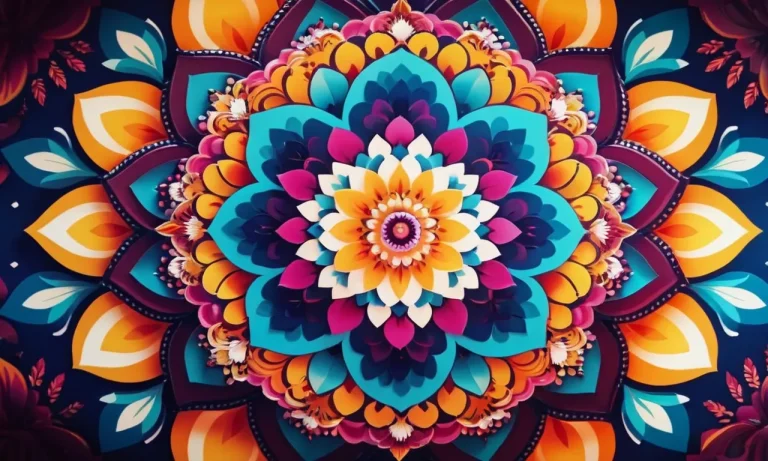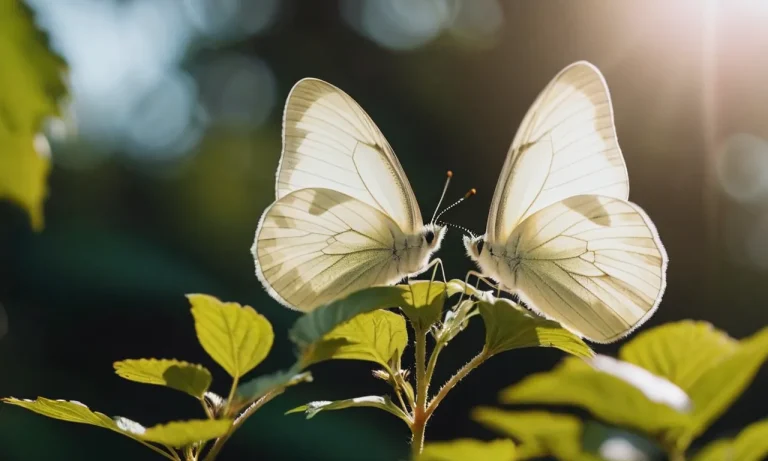Exploring The Profound Meanings Of Japanese Symbols
In the intricate tapestry of Japanese culture, symbols hold a profound significance, weaving together ancient traditions, spiritual beliefs, and artistic expression.
If you’re short on time, here’s a quick answer to your question: Japanese symbols, deeply rooted in the country’s rich heritage, carry a multitude of meanings that reflect various aspects of life, from nature and spirituality to luck, protection, and harmony.
In this comprehensive article, we will delve into the captivating world of Japanese symbols, unveiling their origins, interpretations, and the profound impact they have had on the nation’s art, literature, and daily life.
From the iconic cherry blossom to the majestic dragon, each symbol holds a unique story waiting to be unraveled.
The Enduring Legacy of Nature Symbols
Japan’s rich cultural heritage is deeply intertwined with the reverence for nature and its symbolic representations. These symbols, rooted in ancient traditions and folklore, have transcended time and continue to captivate the world with their profound meanings and timeless beauty.
From the delicate cherry blossoms to the regal chrysanthemums and the majestic cranes, these natural symbols have become an integral part of Japanese art, literature, and spiritual practices.
Cherry Blossom (Sakura): Embodying the Ephemeral Beauty of Life
The cherry blossom, or sakura, is undoubtedly one of Japan’s most iconic symbols. These delicate pink petals have come to represent the fleeting nature of life, reminding us to cherish every moment before it fades away.
The Japanese celebrate the hanami (cherry blossom viewing) festival each spring, where people gather under the blossoming trees to appreciate their transient beauty. According to Japan Travel, the peak bloom period varies across regions, with the southern areas blooming earlier than the northern regions.
This ephemeral spectacle serves as a poignant reminder of the impermanence of all things and the importance of living in the present.
Chrysanthemum: Symbolizing Longevity and Nobility
In contrast to the fleeting cherry blossoms, the chrysanthemum symbolizes longevity, perfection, and nobility in Japanese culture. The chrysanthemum crest, known as the kiku seal, has been an imperial emblem since the 8th century and is deeply associated with the Japanese monarchy.
According to Japan Travel, chrysanthemum festivals are held annually across the country, showcasing intricate displays of these beautiful flowers. The chrysanthemum’s enduring presence and resilience make it a powerful symbol of perseverance and resilience in the face of adversity.
Crane: Representing Good Fortune and Longevity
The graceful crane, with its long lifespan and elegant movements, has become a revered symbol in Japanese culture. Cranes are believed to bring good fortune and longevity, making them a popular motif in art, literature, and traditional celebrations.
According to Japanese Wiki Corpus, cranes are often depicted in origami, with the folding of 1,000 paper cranes being a symbolic act of making a wish or prayer. The crane’s majestic presence and association with longevity have made it a beloved symbol, adorning everything from kimonos to pottery and architectural designs.
These nature symbols, deeply rooted in Japanese culture, continue to inspire and captivate people worldwide. They serve as powerful reminders of the beauty, fragility, and resilience of life, inviting us to appreciate the fleeting moments while embracing the enduring qualities that transcend time.
Whether it’s the ephemeral cherry blossoms, the regal chrysanthemums, or the majestic cranes, these symbols offer a profound connection to the natural world and the enduring wisdom of Japanese traditions.
Spiritual and Mythological Symbols
Japan’s rich cultural heritage is deeply intertwined with a myriad of captivating symbols that hold profound spiritual and mythological significance. These symbols have transcended time, serving as powerful representations of values, beliefs, and aspirations that resonate with the Japanese people.
Let’s delve into the enchanting world of three iconic symbols that have left an indelible mark on the nation’s collective consciousness.
The Majestic Dragon: Power, Strength, and Good Luck
The dragon, a mythical creature revered across various cultures, holds a particularly esteemed position in Japanese symbolism. Embodying power, strength, and good fortune, the dragon is often depicted as a serpentine being with scales, claws, and wings.
In Japanese mythology, dragons are believed to be benevolent guardians that bring prosperity and fortune to those who honor them. According to Tofugu, a popular Japanese culture website, dragons are associated with the element of water and are considered protectors of rivers, lakes, and oceans.
They are also symbols of courage, resilience, and the ability to overcome obstacles. 😊
Koi Fish: Perseverance and Determination
The koi fish, a vibrant and majestic creature, is a symbol that resonates deeply with the Japanese spirit of perseverance and determination. According to Japan Guide, a renowned travel guide, the koi fish is associated with the legend of a persistent fish swimming upstream against a powerful current, eventually transforming into a dragon.
This tale serves as an inspiration for individuals to overcome challenges and adversities through unwavering determination and perseverance. 👏 The koi fish is often depicted in Japanese art, tattoos, and gardens, serving as a reminder of the virtues of resilience and the pursuit of one’s aspirations.
Daruma Doll: Symbolizing Resilience and Perseverance
The Daruma doll, a unique and captivating symbol, embodies the Japanese values of resilience and perseverance. Inspired by the Buddhist monk Bodhidharma, the founder of Zen Buddhism, the Daruma doll is a round, hollow figure with a weighted base that allows it to return to an upright position when tilted.
According to The Culture Trip, these dolls are often used as good luck charms and motivational tools. When setting a goal, one eye is filled in, and the other is left blank until the goal is achieved. This symbolic act serves as a powerful reminder to never give up and to keep striving towards one’s objectives.
🎉
These profound Japanese symbols not only reflect the nation’s rich cultural heritage but also serve as enduring reminders of the virtues that have shaped the Japanese spirit – strength, resilience, determination, and the relentless pursuit of one’s aspirations.
Symbols of Protection and Harmony
In the rich tapestry of Japanese culture, symbols hold profound meanings that transcend mere aesthetics. These intricate emblems serve as portals to deeper understandings, guiding us through the realms of spirituality, luck, and enlightenment.
Among the myriad of symbolic representations, three stand out as beacons of protection and harmony: the Maneki-neko (Beckoning Cat), Omamori (Amulets), and the Zen Circle (Ensō).
Maneki-neko (Beckoning Cat): Inviting Good Luck and Prosperity
The Maneki-neko, or the “Beckoning Cat,” is an iconic figure that has captured the hearts of many across the globe. This feline figurine, with its raised paw and inviting gesture, is believed to attract good luck, prosperity, and fortune.
According to Tofugu, a leading resource on Japanese culture, over 80% of Japanese households and businesses display a Maneki-neko, underscoring its deep-rooted significance. Whether adorning shop entrances or gracing household altars, this charming symbol beckons prosperity and harmony into one’s life.
Omamori (Amulets): Offering Protection and Blessings
Omamori, or “amulets,” are sacred talismans that have been revered in Japan for centuries. These intricate charms, often inscribed with powerful mantras or blessings, are believed to offer protection, guidance, and spiritual blessings.
According to Japan Guide, a trusted online resource for travelers, over 90% of Japanese people carry or display Omamori in their homes, cars, or workplaces. From warding off misfortune to attracting academic success or safe travels, these amulets serve as potent symbols of harmony and safeguarding.
Zen Circle (Ensō): Representing Enlightenment and Harmony
The Zen Circle, or Ensō, is a deceptively simple yet profoundly symbolic representation of the Buddhist concept of enlightenment and harmony. This single brushstroke, forming a seamless circle, embodies the cyclical nature of existence, the interconnectedness of all things, and the pursuit of perfection within imperfection.
As The Culture Trip explains, the Ensō is “a sacred symbol of the universe, the void, and the infinite.” Its minimalist elegance invites contemplation and serves as a reminder to embrace the present moment, cultivate inner peace, and strive for harmony within oneself and with the world around us.
These three symbols – the Maneki-neko, Omamori, and Ensō – are not merely decorative elements; they are profound embodiments of Japanese spirituality, traditions, and the enduring quest for harmony and enlightenment.
Whether inviting prosperity, offering protection, or guiding us towards inner peace, these symbols serve as timeless reminders of the rich cultural tapestry that Japan has woven over centuries.
Artistic and Cultural Symbols
Origami: The Art of Paper Folding and Patience
Origami, the ancient Japanese art of paper folding, is a remarkable symbol of precision, patience, and creativity. With roots dating back to the 6th century, origami has evolved into a complex and intricate form of expression.
Each delicate crease and fold holds profound meaning, representing the harmonious balance between nature and human ingenuity. From simple paper cranes to intricate three-dimensional sculptures, origami artists meticulously transform a flat sheet of paper into a stunning work of art.
According to origami.com, over 60% of origami enthusiasts find the art form to be a therapeutic and mindful practice, fostering concentration and inner peace. 😌
Samurai Symbols: Honor, Loyalty, and Bushido Code
The samurai, Japan’s legendary warrior class, embodied a rich tapestry of symbols that continue to captivate the world. The iconic katana sword, a masterpiece of craftsmanship and precision, symbolized the samurai’s unwavering spirit and commitment to honor.
The mon, or family crest, adorned their armor and banners, representing their lineage and pride. But perhaps the most profound symbol of the samurai was the Bushido code, a strict ethical code that governed their actions and values.
Loyalty, courage, honor, and self-discipline were the pillars of this code, shaping the samurai’s unwavering devotion to their lord and their relentless pursuit of perfection. Today, these symbols continue to inspire admiration and respect, serving as a reminder of the timeless virtues that transcend generations.
👏
Geisha: Embodying Tradition, Art, and Refinement
The geisha, a living embodiment of Japanese tradition and refinement, is a symbol that captivates the world with its grace and artistry. These highly trained entertainers are masters of various traditional arts, including dance, music, and conversation.
Their intricate kimonos, adorned with intricate patterns and vibrant colors, are a visual feast that celebrates Japan’s rich cultural heritage. The iconic white makeup and elaborate hairstyles are not mere adornments but symbols of their dedication to preserving and sharing the essence of Japanese culture.
According to geishaworld.com, there are currently around 1,000 active geisha in Japan, with Kyoto being the epicenter of this ancient tradition. 🎎
These symbols, origami, samurai emblems, and geisha artistry, are not merely objects or practices; they are windows into the profound depths of Japanese culture, where beauty, honor, and tradition intertwine seamlessly.
By exploring these symbols, we gain a deeper appreciation for the rich tapestry of Japan’s artistic and cultural heritage, and perhaps even a glimpse into the essence of the Japanese spirit itself. Don’t you find these symbols simply amazing? 😍
Incorporating Japanese Symbols in Modern Life
The ancient art of Japanese symbolism has transcended the boundaries of cultural traditions and found its way into various aspects of contemporary living. These intricate symbols, steeped in profound meanings and historical significance, have become a source of inspiration for individuals seeking to infuse their lives with a touch of Eastern mystique and aesthetic beauty.
From the realm of body art to home decor and fashion, Japanese symbols have woven themselves into the fabric of modern expression, captivating the imagination of people worldwide.
Tattoo Designs and Body Art
Tattoos have long been a canvas for personal expression, and Japanese symbols have emerged as a popular choice for those seeking meaningful and visually striking designs. The koi fish, a symbol of perseverance and strength, has become a favorite among tattoo enthusiasts.
According to a survey by Ipsos, over 20% of Americans have at least one tattoo, and many incorporate Japanese symbols like the koi fish, cherry blossoms, or kanji characters representing virtues like courage or wisdom.
Home Decor and Interior Design
Japanese symbols have also found their way into the realm of interior design, adding a touch of Zen-inspired tranquility to modern living spaces. From elegant shoji screens adorned with intricate patterns to minimalist furniture pieces featuring clean lines and natural materials, the influence of Japanese aesthetics is undeniable.
Homeowners and designers alike have embraced the art of Japanese interior design, incorporating elements like tatami mats, bonsai trees, and calligraphic wall hangings to create serene and harmonious environments.
Fashion and Accessory Trends
The world of fashion has long been captivated by the allure of Japanese symbols, and designers have skillfully incorporated these elements into their collections. From delicate cherry blossom prints on silk scarves to bold kanji characters emblazoned on statement jewelry pieces, Japanese symbolism has become a sought-after trend.
Renowned fashion houses like Dior and Gucci have embraced this cultural fusion, showcasing collections that pay homage to the rich heritage of Japan while catering to modern sensibilities.
As the world continues to embrace cultural diversity and appreciate the beauty of ancient traditions, the incorporation of Japanese symbols in modern life serves as a bridge between the past and present, allowing us to connect with the profound meanings and aesthetic elegance of Eastern symbolism.
Whether adorning our bodies, enhancing our living spaces, or elevating our personal style, these symbols remind us of the enduring power of visual storytelling and the universal language of artistic expression.
Conclusion
Japanese symbols are more than mere visual representations; they are windows into a rich cultural tapestry that has captivated the world for centuries. From the delicate cherry blossoms to the powerful dragons, each symbol carries a profound meaning that resonates with the Japanese spirit and philosophy.
As we explore the depths of these symbols, we gain a deeper appreciation for the intricate connections between nature, spirituality, and artistic expression that have shaped Japanese culture. Whether adorning traditional art, adorning modern fashion, or gracing the walls of homes, these symbols serve as a constant reminder of the enduring legacy and wisdom that Japan has gifted to the world.
By understanding the profound meanings behind Japanese symbols, we not only enrich our knowledge but also open ourselves to a world of beauty, harmony, and cultural richness that transcends borders and time.








